Table of Contents
Unveiling the captivating journey of soccer ball history reveals a tale of evolution and innovation. From humble beginnings as makeshift balls to the advanced, precision-engineered spheres used in today’s game, the transformation is remarkable. Delve into the past to uncover how these essential tools of the beautiful game have evolved over time, shaping the way soccer is played worldwide. Explore the fascinating twists and turns that have marked the trajectory of soccer ball design, from rudimentary pig bladders to cutting-edge synthetic materials. Witness the contrast between tradition and modernity as we trace the intriguing path of the soccer ball through history.
Key Takeaways
-
Understanding the origins and evolution of soccer balls provides insights into the rich history of this essential sport equipment.
-
Charles Goodyear’s contribution to the development of soccer balls showcases the importance of material innovation in sports equipment.
-
The progress made in the 1900s and modern era advancements have significantly improved the quality, performance, and durability of soccer balls.
-
The evolution of soccer balls has had a direct impact on the game, influencing players’ techniques, strategies, and overall gameplay.
-
To appreciate the game of soccer fully, it is essential to recognize the role that advancements in soccer ball technology have played in shaping the sport.
-
Exploring the history of soccer balls not only enhances our knowledge but also fosters a deeper appreciation for the heritage and tradition of this beloved sport.
Origins of Soccer Balls
Early Designs
Early soccer balls had diverse origins, ranging from human heads to animal bladders for construction. Various civilizations played a crucial role in shaping the evolution of these early ball games. The transition from using pig bladders to leather-covered balls marked a significant shift towards enhanced durability.
-
Animal bladders were commonly used by ancient civilizations, such as the Chinese and Egyptians.
-
Leather-covered balls emerged during the medieval period, offering better longevity and playability.
Material Innovations
Charles Goodyear revolutionized soccer ball materials by introducing vulcanized rubber, providing increased bounce and durability. H.J. Lindon’s invention of inflatable rubber bladders further transformed ball construction. The introduction of interlocking panels represented a pivotal advancement in modern soccer ball design.
-
Vulcanized rubber allowed for greater consistency in shape and performance.
-
Inflatable rubber bladders provided a more controlled and reliable playing experience.
Game Impact
Early ball designs significantly influenced the development of soccer as a structured game. The advent of mass production played a key role in democratizing soccer, making it more accessible to people worldwide. Medieval customs and traditions also contributed to shaping the rules and structure of soccer as we know it today.
-
The standardization of soccer balls led to uniformity in gameplay across different regions.
-
Mass production enabled widespread participation in soccer, fostering its global popularity.
Evolution in the 1800s
Design Changes
The evolution of soccer ball design in the 1800s saw a transition from irregular, ancient Greek-style spherical balls to more standardized round shapes. This shift was crucial in establishing consistency in gameplay.
The English Football Association’s rules during this time period played a significant role in shaping ball design. These regulations mandated specific dimensions and weight for soccer balls, leading to uniformity across matches.
Shape retention emerged as a key consideration in early ball designs. Manufacturers focused on creating durable structures that could withstand the rigors of gameplay, ensuring longevity and performance consistency.
Material Shifts
In the 1900s, there was a notable shift in soccer ball materials from animal bladders to more robust rubber bladders. This transition improved durability and air retention, enhancing the overall quality of gameplay.
Old leather balls faced challenges with water absorption and quality, affecting their performance during wet conditions. The introduction of rubber bladders addressed these issues, providing better resistance to external elements.
During World War II, advancements were made to enhance ball durability further. Innovations such as reinforced stitching and improved synthetic materials contributed to increased resilience on the field.
Playing Style Influence
Ball materials played a pivotal role in influencing playing styles across different eras. The shift from heavy leather balls to lighter, more responsive designs altered the dynamics of gameplay, encouraging faster and more technical play.
The weight and size of soccer balls directly impacted playing techniques. Lighter balls enabled quicker passes and dribbling, while larger sizes enhanced accuracy and power in shots, shaping players’ strategies on the field.
Advancements in ball design not only improved durability but also elevated player performance. Enhanced aerodynamics, grip, and bounce characteristics empowered athletes to showcase their skills with greater precision and control.
Charles Goodyear’s Contribution
Vulcanized Rubber Introduction
Charles Goodyear’s development of vulcanized rubber revolutionized soccer ball history. The introduction of vulcanized rubber in the mid-1800s marked a pivotal moment in sports equipment innovation. This breakthrough material offered superior durability and performance compared to traditional leather or animal bladders.
Vulcanized rubber brought several key advantages to soccer balls. Its enhanced elasticity provided players with better control and accuracy during matches. Moreover, the material’s weather-resistant properties made it ideal for playing in various conditions, ensuring consistent performance on the field. The introduction of vulcanized rubber also standardized the quality of soccer balls, leading to more uniform gameplay across different regions and competitions.
Durability and Performance
Material innovations in the 1900s significantly improved soccer ball durability and performance. The integration of synthetic paints and non-porous materials enhanced the ball’s resistance to wear and tear, prolonging its lifespan on the pitch. These advancements not only increased the longevity of soccer balls but also maintained their shape and bounce over extended periods of use.
The use of synthetic paints on soccer balls not only added vibrant colors for better visibility on the field but also protected the surface from abrasions and scratches. Non-porous materials, such as polyurethane, contributed to improved air retention, reducing the need for frequent inflation during games. As a result, players experienced more consistent performance levels with durable balls that retained their characteristics throughout intense matches.
Progress in the 1900s
Panel Development
cer ball panel designs evolved significantly during the 1900s. Initially, balls were made of leather panels stitched together. This method resulted in irregular shapes and unpredictable bounces. However, with the introduction of interlocking panels, the roundness of soccer balls improved. The interlocking design ensured a smoother surface, enhancing the ball’s aerodynamics.
-
Leather panels stitched together
-
Introduction of interlocking panels
-
Improved roundness and aerodynamics
Synthetic Materials
In the 1960s, a groundbreaking shift occurred with the introduction of synthetic materials in soccer ball production. This innovation revolutionized the manufacturing process, offering durability and consistency. Synthetic materials allowed for better control over the ball’s properties, leading to more predictable performance on the field.
-
Introduction of synthetic materials in the 1960s
-
Revolutionized manufacturing process
-
Enhanced durability and consistency
Regulation and Standardization
FIFA played a crucial role in standardizing soccer balls worldwide. By establishing regulations on size, weight, and type, FIFA ensured uniformity across all levels of play. International standards not only enhanced ball consistency but also influenced gameplay by providing players with a reliable and consistent experience.
-
FIFA’s role in standardizing soccer balls
-
Impact of international regulations on ball consistency
-
Influence of standardization on gameplay at all levels
Modern Era Advancements
Tech Integration
Technology plays a crucial role in modern soccer ball design, revolutionizing the game. Sensors embedded in balls track data like speed and spin, enhancing player performance. The integration of technology has improved ball accuracy and responsiveness on the field. In the future, we can expect even more advanced features like smart balls that provide real-time feedback to players.
Aerodynamics Improvement
Aerodynamics are vital in soccer ball design as they impact the ball’s trajectory and flight stability. Advancements in aerodynamics have led to balls with reduced drag and better swerve capabilities. The shape and panel design of the ball significantly influence its aerodynamic properties, affecting how it moves through the air. Players benefit from improved aerodynamics by achieving more precise shots and passes during games.
-
Reduced drag
-
Better swerve capabilities
-
Precise shots and passes
Eco-Friendly Materials
The shift towards eco-friendly materials in soccer ball production is a positive step towards sustainability. Using materials like recycled plastics and natural rubber reduces environmental impact. Sustainable materials not only benefit the planet but also offer durability and performance comparable to traditional options. Environmental consciousness is essential in modern ball design to ensure a greener future for the sport.
-
Recycled plastics
-
Natural rubber
-
Durability and performance
Impact on the Game
Gameplay Evolution
cer ball innovations have significantly influenced gameplay evolution over the years. The introduction of the official game ball by FIFA has led to more consistent performance and flight characteristics. Players now have better control and accuracy, impacting how they approach passing, shooting, and dribbling.
The standardization of soccer balls has revolutionized game strategies. With consistent weight, size, and shape, players can predict ball behavior more accurately. This has resulted in teams developing strategic plays centered around ball movement and positioning. The evolution of ball design, including advancements in aerodynamics and materials, has directly influenced modern soccer tactics.
Accessibility Increase
Mass production has played a crucial role in increasing the accessibility of soccer balls worldwide. Affordable materials like synthetic leather and rubber have made it easier for manufacturers to produce high-quality balls at lower costs. This affordability has made soccer more inclusive, allowing individuals from diverse socio-economic backgrounds to participate in the sport.
Accessible balls have significantly contributed to the global popularity of soccer. With more people able to afford quality soccer balls, the sport has seen widespread adoption across various regions. This increased accessibility has not only boosted participation levels but also fostered a sense of community and camaraderie among players globally.
Global Reach and Influence
cer balls have been instrumental in expanding the global reach of the sport. By establishing standards for official game balls, FIFA has ensured consistency in international competitions like the FIFA World Cup. This standardization has facilitated fair play and enhanced the overall quality of matches, captivating audiences worldwide.
Standardized soccer balls have become symbols of unity and passion across diverse cultures. Regardless of geographical location or background, the sight of a football evokes a shared love for the game. The universal appeal of soccer balls transcends borders, bringing together people from different nations under a common passion for football.
Final Remarks
You’ve journeyed through the fascinating history of soccer balls, from their humble beginnings to the cutting-edge advancements of today. The evolution of these essential tools has not only shaped the game but also reflected the progress of technology and materials over centuries. Understanding this progression adds a new layer of appreciation to the simple yet crucial element of a soccer match.
As you continue to enjoy the beautiful game, take a moment to reflect on the journey of the soccer ball. Consider the innovations and contributions that have led to the high-quality balls used in matches worldwide. Your awareness of this history enhances your experience on the field or while watching a game, connecting you to the legacy and evolution of this iconic sports equipment.
Balls Used in FIFA World Cup |
|||
| Year | Ball | Manufacturer | Images |
| 1930 | |||
| 1934 | Federale 102 | ECAS, Rome | 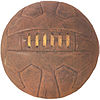 |
| 1938 | Allen, Paris | 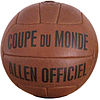 |
|
| 1950 | Duplo T | Superball | 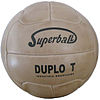 |
| 1954 | Swiss World Champion | Kost Sport, Basel | |
| 1958 | Top Star | Sydsvenska Lader och Remfarbriken | 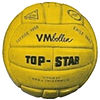 |
| 1962 | Crack Top star | Senor CustodioZamora H | 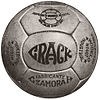 |
| 1966 | Challenge 4‑star | Slazenger |  |
| 1970 | Telstar | Adidas |  |
| 1974 | Telstar Durlast | Adidas | |
| 1978 | Tango | Adidas |  |
| 1982 | Tango Espana | Adidas | 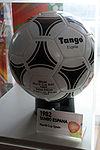 |
| 1986 | Azteca | Adidas |  |
| 1990 | Etrusco Unico | Adidas | 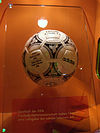 |
| 1994 | Questra | Adidas | |
| 1998 | Tricolore | Adidas |  |
| 2002 | Fevernova | Adidas |  |
| 2006 | Teamgeist | Adidas |  |
| 2010 | Jabulani | Adidas | 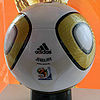 |
| 2014 | Brazuca | Adidas | |
Use of Football Balls by different Leagues
| Balls used in Leagues | |
| League Name | Ball |
| English Premier League | Nike Maxim |
| Primera Division | Puma King ball |
| La Liga | Nike Maxim |
| Campeonato Brasileiro Serie A | Nike Maxim |
| Bundesliga | Adidas Torfabrik |
| Serie A | Nike Maxim |
| Ligue 1 | Adidas Le 80 |
| Argentina Primera Division | Adidas Tango Argentina 12 |
| Russian Premier League | Adidas Tango 12 |
| Liga Sagres | Adidas Tango 12 |
| Super Lig | Nike Maxim |
| Super League Greece | Nike Maxim |
| Liha 1 | Nike Maxim |
| Scottish Premier League | Mitre REVOLVE FL |
| J. League Division | Adidas Tango 12 |
| Bulgarian A PFG | Puma |
| Ekstraklasa | Puma |
| Major League Soccer | Adidas Prime |
| Chinese Super League | Nike |
| A‑League | Nike Seitiro |
| I‑League | Nike |
| Welsh Premier League | Nike |
| Indonesian Premier League | Nike Maxim |
| Derbystar Brilliant APS | KNVB Eredivisie |
Frequently Asked Questions
What are the origins of soccer balls?
cer balls have a rich history dating back to ancient civilizations like the Mayans and Chinese, who used materials like rubber and animal skins to create early versions of the ball for their games.
How did soccer balls evolve in the 1800s?
In the 1800s, soccer balls transitioned from being handmade with varying sizes and shapes to standardized leather balls filled with animal bladders. This standardization improved consistency in play and fairness.
What was Charles Goodyear’s contribution to soccer ball history?
Charles Goodyear revolutionized soccer ball production by inventing vulcanized rubber in the mid-19th century. This innovation led to more durable and reliable soccer balls, making them suitable for different playing conditions.
What advancements were made in the 1900s regarding soccer balls?
During the 1900s, soccer balls saw significant improvements with the introduction of synthetic materials like polyurethane and waterproof coatings. These advancements enhanced durability, performance, and weather resistance of soccer balls.
How have modern era advancements impacted soccer balls?
Modern era advancements such as innovative designs, advanced aerodynamics, textured surfaces for better grip, and enhanced durability have transformed soccer balls into high-performance equipment that ensures optimal gameplay for players at all levels.
What impact do soccer balls have on the game?
cer balls play a crucial role in shaping the game by influencing player performance, match dynamics, and overall gameplay experience. The evolution of soccer balls has contributed to enhancing skills development, promoting fair play, and improving the overall quality of matches.


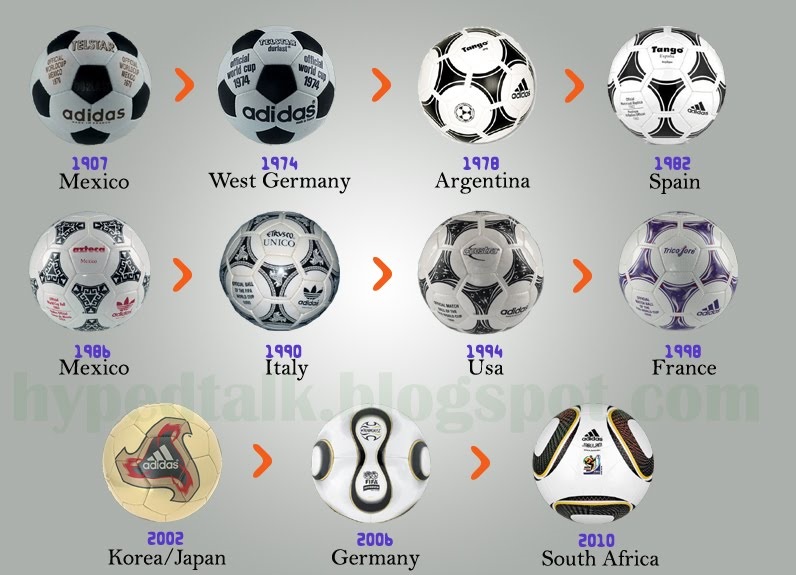

Watch FIFA Worldcup 2014 Live Coverage Here http://www.watchfifaonline.net/ Watch FIFA Worldcup 2014 http://watchlivefifa.wordpress.com/